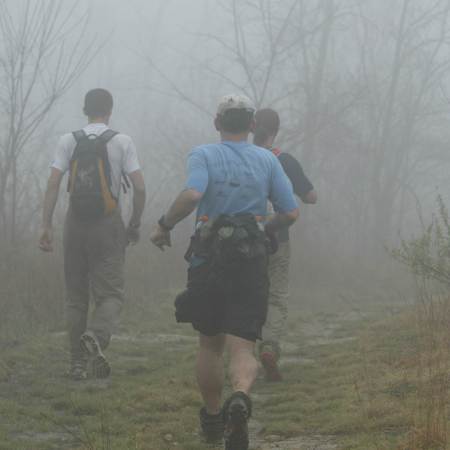In recent years, a growing body of research has extolled the benefits of “quick-burst” exercise. Shorter, fiercer sessions — some as brief as just four minutes — have been linked to muscle growth, clean arteries and healthy aging.
This sort of circuit training has gotten especially popular over the last half-decade: most connected fitness machines offer workouts as short as 15 minutes, while ClassPass trainers run devotees through bite-sized cycles of all-out effort and rest.
Too often, though (and even amongst knowledgeable, “elite” athletes), high-intensity interval training can begin to overtake all other workout patterns…despite the fact just two HIIT sessions a week is ideal. How should you spend the majority of your exercise minutes instead? Well, in a state of Zone 2 cardio — or what some online have even taken to calling “lazy training.”
Lengthy jogs, wanders and dog walks deserve more credit for burning fat and enhancing mitochondrial function, which, in turn, can help optimize the metabolism, steady blood sugar levels and stiff-arm obesity. These bouts of exercise might not light up Strava’s activities feed or the heart rate monitor on your Apple Watch (hence why many don’t count them, or consider them “lazy” compared to a bone-rattling spin class), but that’s sort of the point.
“Zone 2” refers to a workout intensity level that accesses 60-70% of your maximum heart rate. It varies based on your age: try 208 – (0.7 x age), then multiply by 0.6 and 0.7 to find your exact range. Mine is roughly 114 to 132 beats per minute.
Recommendations vary on precisely how frequently you should be in Zone 2, but experts aren’t shy in their prescriptions. Think: around 180 minutes a week. As a Zone 2 session clocks in at a minimum of 45 minutes, that’s three to four days of a week spent “training” at just 60-70% of your max heart rate.
Which means Zone 2 should be your primary form of exercise. Not Zones 4 or 5 (HIITand forms of exercise just below it), not Zone 1 (sitting on a couch, reading a book) and not Zone 3 (a nebulous middle ground with dubious long-term physical benefits). Zone 2 is the way to go. Devote most of your week to it, and a day or two to training hard.
This might come as a bit of a shock to athletes who pride themselves on training hard, no matter what. But overtraining leads to energy deficiency and diminished returns. It taxes the heart. It makes workouts undesirable or boring, and burnout inevitable. The middle ground is the way. If you have a fitness wearable to measure your heart rate, take note of what you need to do to stay in or around Zone 2.
Surface level, it’ll be the sort of exercise that allows you to hold down a conversation (or, if you’re walking/running/cycling alone, capably listen to and understand a podcast). You’ll be able to tell, implicitly, when you’ve left this range. And your heart rate monitor will undoubtedly corroborate that hunch.
Forgive the allusion to an endurance sport, as this sort of science is relevant to all manner of athlete, and for all manner of activity — even if you’re just pushing a stroller through a park — but it’s helpful to think about this concept from the perspective of a thoughtful marathoner. In the months leading up to a race, they’ll consistently hammer Zone 2, in order to build up a sustainable base and minimize unnecessary stress.
Running slow makes you faster, at the end of the day. Seriously. There’s a lot of science behind it, which has to do with glycogen stores and muscle training and mindset and something called “bonking,” but the endgame is simple and memorable. It’s one of the golden rules of running: “Easy days easy, hard days hard.” However you choose to get up and move around, just remember: easy doesn’t mean lazy.
Thanks for reading InsideHook. Sign up for our daily newsletter and be in the know.


















